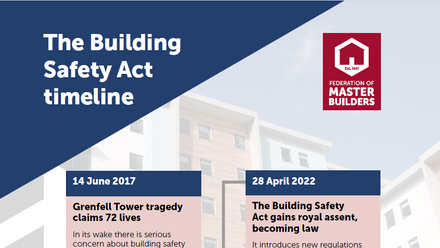As the summer season approaches, the rising temperatures bring new challenges for builders and construction workers across the UK. While the sun may be a welcome sight, prolonged exposure to its harmful rays can pose serious health risks. Sun protection on construction sites is crucial to safeguarding the well-being of workers and ensuring their continued productivity. This article aims to highlight the importance of sun protection and provide practical tips for builders to stay safe while working under the sun.
What are the risks of sun exposure for builders?
Exposure to the sun's ultraviolet (UV) radiation can lead to various health issues, ranging from temporary discomfort to long-term consequences. The risks include:
- Sunburn: Prolonged exposure to UV rays can cause painful sunburn, leading to redness, swelling, and blistering. Severe sunburns can result in dehydration and even heatstroke.
- Skin cancer: Construction workers have a higher risk of developing skin cancer due to prolonged sun exposure over the course of their careers. According to Construction Management Magazine, construction workers constitute 44% of all occupational skin cancer diagnoses and 42% of occupational skin cancer deaths each year.
- Heat-related illnesses: Working under the scorching sun can lead to heat exhaustion and heatstroke, which can be life-threatening. Symptoms include dizziness, nausea, rapid heartbeat, and confusion.
- Ageing: Too much sun exposure can accelerate the ageing process in your skin, giving it a leathery, mottled or wrinkled appearance and / or texture.
The Health and Safety Executive (HSE) stresses that everybody who works outside is subject to the risks of too much sun exposure and should make sure they are properly protected. However, it identifies three groups who are particularly vulnerable:
- Those with particularly fair or freckled skin, who struggle to get a tan or who experience burning before they tan.
- People with red hair and / or lightly coloured eyes.
- Anybody with a lot of moles on their skin.
Practical sun protection measures for builders
- Wear protective clothing: Builders should opt for loose-fitting, lightweight clothing that covers as much skin as possible, and should avoid going shirtless. Long-sleeved shirts, long pants, and wide-brimmed hats provide excellent protection against the sun's rays.
- Use sunscreen: Use a high spectrum sunscreen that protects you from UVA and UVB rays and check the advice on the NHS website.
- Seek shade: Designate shaded areas on the construction site where workers can take breaks and find relief from direct sunlight. Encourage frequent breaks in shaded areas, particularly during the hottest hours of the day.
- Stay hydrated: Proper hydration is essential for preventing heat-related illnesses. Encourage workers to drink water frequently, even if they don't feel thirsty. Provide easy access to cool water on-site.
- Use protective eyewear: Wear sunglasses with UV-protection to shield the eyes from harmful radiation. Look for sunglasses that block 100% of UVA and UVB rays.
- Implement a Sun Safety Policy: Employers should establish comprehensive sun safety policies that include training, provision of sun protection equipment, and regular reminders for workers to prioritise sun safety.
- Schedule smart: Plan work schedules to avoid the hottest parts of the day, typically between 11am and 3pm. If possible, schedule more physically demanding tasks during cooler morning or late afternoon hours.
- Check your skin regularly: Keep an eye out for any new moles or discolouration that might appear anywhere on your skin. If you discover anything that has an usual shape, size or colour, or starts itching or even bleeding, consult a doctor immediately for guidance on how to address it.
Sun protection is everybody’s responsibility
Sun protection is not merely a matter of comfort; it is a vital aspect of ensuring the health and safety of builders on construction sites. By taking the precautions shown above, builders can significantly reduce their risk of sunburn, heat-related illnesses, and long-term health consequences like skin cancer.
Employers have a crucial role to play in implementing sun safety policies and providing the necessary resources to protect their workforce. That being said, everybody should be looking after their own wellbeing on the job site.






